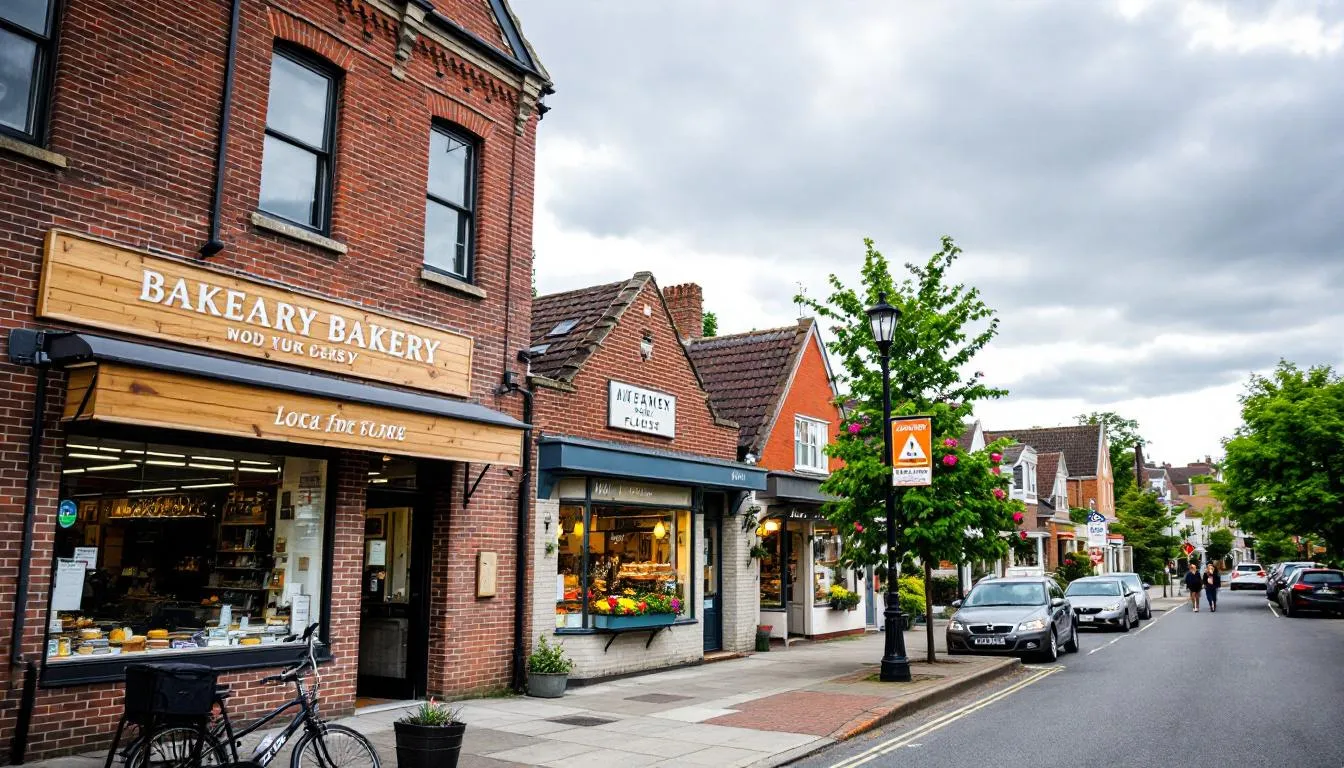- 📈 68% of real estate sellers choose agents via referrals or past experience, per NAR research.
- 🕐 Paid real estate leads often require 6–12 months of follow-up to yield ROI (The Close, 2022).
- ⚡ 5-minute lead response times greatly increase conversion rates (Zillow, 2022).
- 🧠 Businesses using marketing automation see 451% more qualified leads (HubSpot Research, 2022).
- 🌐 Hyperlocal content helps real estate agents do better than national portals in specific local markets.

Real Estate Leads: Are You Missing These 3 Types?
Ever feel like you’re working hard for real estate leads—but never quite getting ahead? If so, you’re not alone. Many agents have good times and bad times with leads. Agents who do well have a steady, automated way to get leads. This is the main difference between those who just get by and those who succeed. Top pros like Las Vegas real estate leader Steve Hawks don’t rely on just one source. They build a strong mix of referral, organic, and paid leads. And then they use smart systems to keep things running all year. Here’s how to do the same.

Why You Need Different Kinds of Lead Sources
If you’re relying on one way to get real estate leads—like social media, referrals, or a Zillow ad campaign—you’re putting all your income at risk. A healthy, lasting real estate business needs a mix of ways to get leads. This mix helps you handle changes in the market, technology, and what people want.
Real estate always has ups and downs. Season changes, interest rate changes, social and political changes, and even local growth can really affect what buyers and sellers do. If one channel stops working—say your Facebook ads stop bringing in leads after an update, or your Sphere of Influence (SOI) slows down because people moved—you will need other sources ready.
A mix of lead sources gives you steady income. And it lowers the cost to get leads over time. It also lets you plan ahead. Further, it allows agents to grow better. You can take on more listings or buyer clients without getting too tired.

Referral & Sphere of Influence (SOI) Leads
According to the National Association of Realtors, a large 68% of home sellers reported finding their agent through previous deals or referrals. This statistic shows how important the SOI is. The SOI includes close friends, family, past clients, co-workers, and people you know in the community. It’s anyone who already knows, likes, and trusts you.
Common Mistakes with SOI
Many agents don't use this great source of business. This is because they are not steady or they use too much automation. Here are some mistakes to avoid:
- 🚫 Only making contact when business is slow or you really need sales
- 🤖 Using too much automation in messages until they feel robotic or like spam
- 📉 Not seeing the full value of a client. Don't assume one client means only one deal.
You need to keep relationships going all year, not just when you need sales. Each past client could bring many chances to connect over time—from themselves, their family, and friends.
Make SOI Work with These Tactics
- 📱 Change how you talk to people: Don't just send newsletters. Mix it up with personal text messages, social media DMs, hand-written notes, and birthday calls.
- 📅 Celebrate "home-iversaries": A quick phone call or small gift on the anniversary of their home purchase brings back good feelings.
- 📰 Share very local updates: Example—“Where to Park for Raiders Games in Allegiant Stadium” or “Great Coffee Shops in Summerlin.”
Steve Hawks expertly uses his SOI. He shows up in his community, goes to local events, and gives real help to his network. His plan? Be more than an agent—become a trusted guide.

Organic Inbound Leads
Organic inbound real estate leads come when people find your brand or content through unpaid ways. This includes search engines, social media, and YouTube. These leads turn into clients more often because they already trust what you know before ever meeting you.
Why Organic Leads Work
Organic leads are already good leads. They’ve read your blog posts, watched your videos, looked at your neighborhood guides quickly, and joined your email list. All of this builds trust before the first conversation.
Benefits include:
- 🧲 Less resistance because the buyer sought you out
- 🎯 You already have respect, which means you don't need to push sales hard
- 💡 The good gets stronger over time. Content you created in 2022 might still get leads in 2025.
Create Content That Works While You Sleep
Here’s how to build your online presence to get real estate leads day and night:
- 📝 Posts like “Best Neighborhoods in Las Vegas for Investment Properties” capture specific Google searches
- 📹 YouTube videos showing popular communities, such as “Summerlin vs. Henderson: Which is Better for Families?”
- 📍 Blog and video guides for SEO like “First-Time Homebuyer Programs in Nevada (2024 Update)”
- 💬 Answer common questions: “How Does Formula 1 Street Racing Affect My Daily Commute in Vegas?”
- 🔎 Use keyword research tools to find what prospects are searching for locally
Steve Hawks is known for steady, good quality content work. His local YouTube channel isn’t just an ad. Instead, it’s a source of great information with useful education, what's happening in the community, and how it is to live there. This helps prospects feel very informed before reaching out.

Paid or Purchased Leads
For getting leads fast, nothing beats paid lead plans. These include:
- Google Ads (Pay-Per-Click or PPC)
- Facebook and Instagram Ads
- Purchased leads from sites like Zillow, realtor.com, or BoldLeads
But here's the problem: without a plan, you're wasting money. As noted in The Close, it can take 6–12 months of planned, steady follow-up to see a return on your money from paid real estate leads. That’s a long time if you're not set up for it.
What Can Go Wrong
Paid leads often get a bad name because of not being done well. Common problems include:
- 🐢 Slow follow-up: Agents responding hours—if not days—too late.
- 🔍 No tracking system: Leads get lost or get impersonal sales messages.
- 🤝 Not checking leads well: Agents spending hours on buyers who aren't ready or don't fit.
What a Paid Lead System Looks Like
You don’t need fancy technology—just steady effort and speed. Here are the must-haves:
- 🚨 Respond within 5 minutes: Use auto-replies and CRM-triggered responses to make sure you are the first to connect (Zillow, 2022).
- 💬 Use scripts to build a good connection: Ask open-ended questions while respecting how fast they want to move. Build trust with questions like “What’s bringing you to town?”
- 🔁 Drip campaigns: Use personal texts, emails, and social calls over 6–10 touches at least.
Also, try out different ads to see which works best. Test one ad that promises a "Las Vegas Foreclosure List" vs. another offering “Top 10 Deals Near Summerlin.” Watch how many people click. And then make changes based on that.

Build a System That Works Year-Round
Too many agents collect tools—CRMs, auto-dialers, marketing platforms—and still don't have a plan. Steve Hawks didn’t become a top Las Vegas producer by making things up as he went. He added structure, follow-up, and plans to every part of his business. This brought stability to the unsteady parts of real estate.
Your Three Layers of a Lead System
Automation Tools
- CRM platforms like Follow Up Boss, LionDesk, or KVCore help you handle leads better
- Use Zapier to connect tools (for example: send new Facebook leads straight into your SMS campaign)
- Create steps for new buyers, open house attendees, or Zillow questions
Content Engine
- Make weekly market updates in groups. Film home tour videos. And record videos that teach on your phone.
- Being steady is more important than being perfect. Publish often, and growth will come over time.
- Don’t copy national content. Put your zip code front and center.
Human Touch
- Set monthly contact goals for calls or drop-ins to past clients—not just automated gifts.
- Celebrate big life events—weddings, babies, graduations—with photos or notes.
- Use empathy. This is more important than automation. Personal conversations still close deals.
According to HubSpot Research, businesses using marketing automation see 451% more qualified leads. When used correctly, this mix of automation, content, and human contact builds trust for many people.

Create a Local-First Strategy
General content won’t stand out. Every major website tries to get buyer attention. Your advantage comes from being very local. The more specific your knowledge, the stronger your place in the market.
Very Local Content Ideas for Las Vegas
- 🏎️ “How Formula 1 Races Are Changing Commute Times in 2025”
- 🏘️ “Top 3 Vegas Neighborhoods for Airbnb Investors Near the Strip”
- 🎰 “What the 2024 Resorts World Expansion Means for North Las Vegas”
- 🛍️ “New Summerlin Mall Openings & What It Means for Nearby Property Values”
- 🚌 “Las Vegas Transit Projects Homebuyers Need to Watch in 2026”
Use hashtags. And include tagged locations. Also, talk with local businesses. The result? Your brand becomes the main source of information for REAL people searching in REAL neighborhoods.

Avoid These Common Real Estate Lead Generation Mistakes
Even experienced agents can accidentally harm their lead flow. Here are a few bad mistakes to avoid:
- ❌ Buying many leads without a follow-up plan
- 🤖 Relying too much on tech—especially AI and auto DMs—without keeping a real human connection
- 🕳️ Depending too much on one channel (for example, “all my leads come from Instagram”)
- 📉 Letting CRM records get old, not tagged, or wrongly sorted
Agents who always do well in their markets spend time each week managing their leads well. They check emails, follow up on recent showings, follow up with old leads. And then they sort their best chances in the middle of the week.

Case Study: Steve Hawks’ Lead Flow Approach
Steve Hawks didn’t find success by accident. Instead, he figured out how it worked and built it back. He is in the top 1% of U.S. Realtors. Hawks has closed over 4,000 homes in the Las Vegas area. He also keeps a good name for being open and having a plan.
What makes Steve's lead flow different from the average?
- A balanced mix from three sources: Referral, organic, and paid real estate leads
- Very careful follow-up plan: Plans made ahead of time, not at the last minute
- Content made just for them: Made for each LAS zip code, neighborhood, and type of person
Rather than react to things, Steve acts first. He sets up plans for future sales, not just current ones. His results show what you can do when you treat how you get real estate leads like a business plan, not a side job.
What Next Step Can You Take?
It’s not about doing everything. Instead, it’s about doing a few things really well and all the time. To make your real estate lead flow stronger:
- 🧭 Choose one lead source you haven't used much to focus on this quarter. Maybe it’s ways to connect with your SOI. Or maybe it's finally adding a Google Ads offer that gets leads.
- 🧰 Check your current CRM. Is it helping you, or is it just software sitting unused?
- 🎥 Set a weekly content goal. This could be one new blog, one community Q&A, or a short neighborhood tour video.
Start with 30–50 prospects in your system. Create tags. Plan a 4-week cycle of contact. Watch how even a basic routine will begin to fill your lead flow.
A steady income starts with a steady plan. And the good news? You control most of it.
Citations
- National Association of Realtors. (2023). Real estate agent profile report. Retrieved from https://www.nar.realtor/research-and-statistics
- The Close. (2022). Best real estate lead generation companies. Retrieved from https://theclose.com
- Zillow Consumer Housing Trends Report. (2022).
- Hubspot Research. (2022). State of Marketing Automation. Retrieved from https://www.hubspot.com

